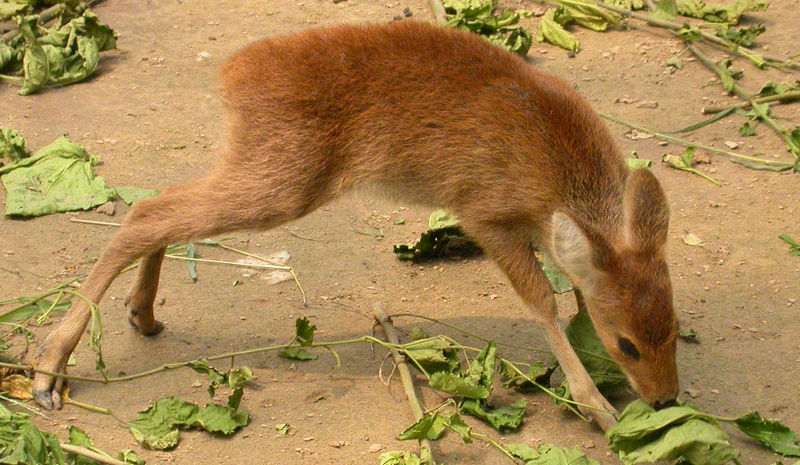ERROR : Server Busy(-1105)
ERROR : Server Busy(-1105)
Water Deer (Hydropotes inermis) - Wiki
Water Deer
From Wikipedia, the free encyclopedia
[Photo] a shammy in beijing zoo
The Water Deer (Hydropotes inermis) is superficially more similar to a musk deer than a true deer (Cervidae - order Artiodactyla) but it is classified as a cervid despite having tusks (downward-pointing canine teeth) instead of antlers and other anatomical anomalies. These unique characteristics have caused it to be classified in its own genus (Hydropotes) and its own subfamily (Hydropotinae). Native to China and Korea, there are two subspecies: the Chinese Water Deer (Hydropotes inermis inermis) and the Korean Water Deer (Hydropotes inermis argyropus).
Water Deer are usually solitary (except during the rut), occasionally forming small groups. They are fairly small (50 cm tall at the shoulder) and good swimmers. They are shy animals whose habitat is the dense vegetation of marshes, making study difficult. It also frequents fields and mountainsides, generally alone. When alarmed, it bounds away like a rabbit. It has a coarse, thick coat which is yellowish brown above, white below. The male lacks antlers but has long, curved upper canine teeth that protrude from the mouth.
Four to five young are born at a time, far more than usual for deer.
The Korean subspecies is found in both North and South Korea and the population appears healthy.
The Chinese subspecies is restricted to several small ranges around the Dongting, Poyang and Taihu lakes along the Yangtze, and in nearby coastal areas including on the Zhoushan islands. It appears reasonably secure within its range. Approximately 10% of Chinese Water Deer are a wild population living around The Fens and Norfolk Broads in the UK, having escaped from Whipsnade Wild Animal Park and Woburn Abbey during the 20th century. There is also a small wild population in France.
http://en.wikipedia.org/wiki/Water_Deer
| The text in this page is based on the copyrighted Wikipedia article shown in above URL. It is used under the GNU Free Documentation License. You may redistribute it, verbatim or modified, providing that you comply with the terms of the GFDL. |
|

